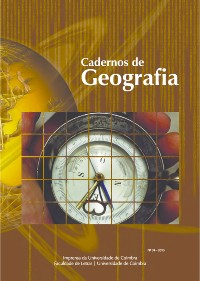Please use this identifier to cite or link to this item:
https://hdl.handle.net/10316.2/38321| DC Field | Value | Language |
|---|---|---|
| dc.contributor.author | Alves, Luiz | - |
| dc.contributor.author | Carvalho, Paulo | - |
| dc.date.accessioned | 2015-12-21T15:11:35Z | |
| dc.date.accessioned | 2020-09-21T21:01:10Z | - |
| dc.date.available | 2015-12-21T15:11:35Z | |
| dc.date.available | 2020-09-21T21:01:10Z | - |
| dc.date.issued | 2015 | - |
| dc.identifier.issn | 0871-1623 | - |
| dc.identifier.issn | 2183-4016 (digital) | - |
| dc.identifier.uri | https://hdl.handle.net/10316.2/38321 | - |
| dc.description.abstract | Uma das dimensões mais recentes do geocaching decorre da sua utilização como ferramenta de aprendizagem no domínio da biologia (com ligação ao conjunto das ciências da v ida e da ter ra), assumindo a designação de biocaching. Neste particular a vinculação estreita à vertente botânica (fitogeográfica) faz desta atividade uma ferramenta a considerar designadamente nas estratégias de salvaguarda e valorização do património natural biótico, além do seu potencial como atividade de lazer ao ar livre. À guisa de abordagem preliminar, pretende-se enfatizar o enquadramento teórico-conceptual subjacente a esta temática, com uma revisão de literatura científica adequada, bem como explicitar a sua vertente empírica (que inclui a apresentação das linhas gerais de um exemplo concreto de implementação em estreita articulação às árvores notáveis/de interesse público e domínios patrimoniais complementares). | por |
| dc.description.abstract | One of the latest dimensions of geocaching stems from its use as a learning tool in the field of biology (with connection to all life and earth sciences), assuming the name o f biocaching. This particular narrow strand binding botany (phytogeographical) makes this activity a tool to consider in particular the strategies of protection and valorization of the natural biotic heritage, apart from its potential as a leisure activity outdoors. By way of preliminary approach, it is intended to emphasize the theoretical-conceptual framework underlying this theme, with a review of the scientific literature, as well as clarifying the empirical aspect (which includes the presentation of the outlines of a concrete example of implementation in close coordination to notable trees/of public interest and additional equity domains). | eng |
| dc.language.iso | por | - |
| dc.publisher | Imprensa da Universidade de Coimbra | - |
| dc.rights | open access | - |
| dc.subject | Leisure | eng |
| dc.subject | Tourism | eng |
| dc.subject | Heritage | eng |
| dc.subject | Biocaching | eng |
| dc.subject | Lazer | por |
| dc.subject | Turismo | por |
| dc.subject | Património | por |
| dc.subject | Biocaching | por |
| dc.title | Biocaching: lazer, turismo e património | por |
| dc.title.alternative | Biocaching: leisure, tourism and heritage | por |
| dc.type | article | - |
| uc.publication.collection | Cadernos de Geografia nº 34 | - |
| uc.publication.firstPage | 101 | - |
| uc.publication.issue | 34 | - |
| uc.publication.lastPage | 106 | - |
| uc.publication.location | Coimbra | - |
| uc.publication.journalTitle | Cadernos de Geografia | - |
| dc.identifier.doi | 10.14195/0871-1623_34_11 | - |
| uc.publication.section | Artigos | - |
| uc.publication.orderno | 11 | - |
| uc.publication.area | Ciências Sociais | - |
| uc.publication.manifest | https://dl.uc.pt/json/iiif/10316.2/38321/231000/manifest?manifest=/json/iiif/10316.2/38321/231000/manifest | - |
| uc.publication.thumbnail | https://dl.uc.pt/retrieve/11453897 | - |
| item.grantfulltext | open | - |
| item.fulltext | With Fulltext | - |
| Appears in Collections: | Cadernos de Geografia | |
Files in This Item:
| File | Description | Size | Format | |
|---|---|---|---|---|
| biocaching.pdf | 19.69 MB | Adobe PDF |  |
Items in DSpace are protected by copyright, with all rights reserved, unless otherwise indicated.
